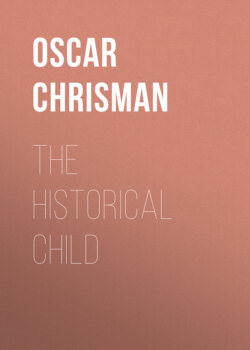Читать книгу The Historical Child - Oscar Chrisman - Страница 18
На сайте Литреса книга снята с продажи.
Education.
ОглавлениеTable of Contents
Annexed to the temples were buildings devoted to the purpose of education for boys, youths, and young women. The education of the males was in the hands of the priests and of the females in the care of the priestesses. Thus the priesthood were enabled to mould the young in their own way. They brought the young so well under their sway that they were never able in after life to free themselves from such nor did they seem so to desire to do.
The sexes were not educated together nor was any intercourse allowed between them, and if such occurred the transgression was severely punished. The morals of both sexes were very closely looked after. Offenses were severely punished, sometimes by death. Love did not lead the Aztec youth in education, but terror.
The children of the common people and those of the higher classes did not attend in the same buildings. Both classes were taught such things in religion, music, painting, and the like, as belonged to their stations in life. The boys of the common people did the heavier and more menial work about the temples, such as the attending to the getting of fuel for the sacred fires and preparing the material for the repair of the sacred edifices. The young nobles attended to the higher duties, such as caring for the fires of the sanctuaries, keeping the upper parts of the temples clean, and decorating the shrines of the gods with flowers. The children of the common classes were obliged to sleep in the school buildings but they took their meals at home while the young nobility remained in the buildings for meals as well as for sleeping.
For the most part the girls who attended the schools belonged to the nobility. They attended to the lower part of the temples, prepared the offerings of meats to the idols, and wove and embroidered the fine cloths for the altars. They were strictly guarded so that no intercourse could take place between them and the youths. When they went out they were accompanied by their teachers and they were not permitted to pay any attention to any one, and if they did so they were severely punished. They were instructed in religion, household arts, spinning, the weaving of mantles, the making of feather-work, and the like.
In the higher schools, the noble boys were taught much that was given to the other boys and also in many of the arts and sciences, such as the study of heroic songs and sacred hymns, history, religion, philosophy, law, astronomy, astrology, and the writing and interpreting of hieroglyphics. Those destined to be priests were further educated in the priestly duties, while those who were to enter upon a military life were exercised in gymnastics, and trained to the use of weapons, to shoot with the bow, to manage the shield, and to cast darts at a mark.
When the young reached the age when marriage was permissible or when business cares should be entered upon, they were sent from the schools with the commendations of the officers and teachers, which were of great aid to many in securing positions in life.
